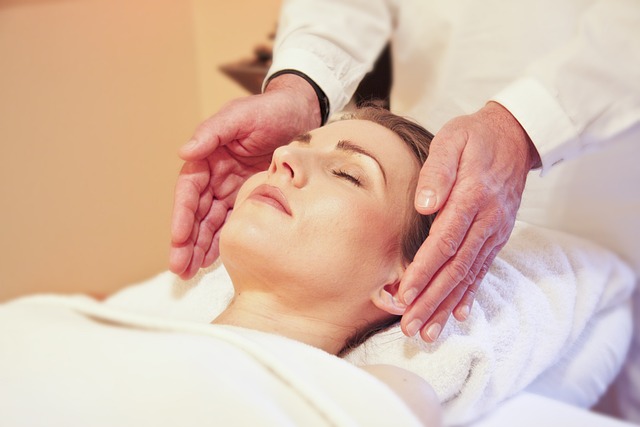
If you’re curious about Reiki and want to know more about the 7 points in this healing practice, you’re in the right place! Reiki is a Japanese technique that promotes relaxation, stress reduction, and healing. In this article, we’ll delve into the 7 points in Reiki and explore their significance in the practice. Whether you’re new to Reiki or already familiar with it, this article will provide you with valuable insights and knowledge. So, let’s dive in and discover the 7 points in Reiki together! Stay tuned for an enlightening and informative read. Reiki is a holistic healing technique that originated in Japan. It is based on the concept of using energy to promote balance and well-being in the body and mind. Reiki practitioners believe that the body has seven main energy centers, known as chakras, which play a vital role in our overall health and vitality. In this article, we will explore the seven points in Reiki and understand their significance in the practice of this healing modality.
What is Reiki?
Reiki is a Japanese word that can be translated as “universal life energy.” It is a non-invasive, gentle, and natural healing technique that uses the application of touch and energy to help restore balance and harmony to the body and mind. It is based on the belief that we all have an energy field surrounding our bodies, and when this energy is blocked or imbalanced, it can lead to physical, emotional, and mental issues.
Benefits of Reiki
Reiki has been known to provide numerous benefits to individuals who seek its healing powers. Some of the benefits of Reiki include stress reduction, relaxation, pain relief, improved sleep, enhanced mental clarity, emotional healing, and overall well-being. Reiki works on all levels of a person’s being and can be beneficial for anyone, regardless of age or background.
History of Reiki
Reiki was developed in the early 20th century by Mikao Usui, a Japanese Buddhist monk. Usui discovered the healing power of energy while practicing meditation and fasting on Mount Kurama. He believed that he had received the gift of healing energy from a higher power, and thus, Reiki was born. Usui taught his healing technique to many students, and Reiki spread not only in Japan but also to the Western world.

Understanding the 7 Points in Reiki
In Reiki, the body is believed to have seven main energy centers, known as chakras. These chakras are located along the spine, starting from the base and ascending to the crown of the head. Each chakra is associated with specific physical, emotional, and mental attributes, and an imbalance in any of these chakras can manifest as various health issues. Now, let’s explore each of the seven points in Reiki and their significance.
1. Root Chakra (Muladhara)
The Root Chakra, also known as Muladhara, is located at the base of the spine. It is associated with the color red and symbolizes stability, security, and grounding. The Root Chakra is responsible for our sense of safety, survival instincts, and connection to the physical world. In Reiki healing, balancing and energizing the Root Chakra can help alleviate fear, anxiety, and feelings of instability.
2. Sacral Chakra (Svadhisthana)
The Sacral Chakra, or Svadhisthana, is positioned just below the navel. It is associated with the color orange and represents creativity, passion, and sexuality. The Sacral Chakra governs our emotions, relationships, and our ability to experience pleasure. A balanced Sacral Chakra can enhance one’s creativity, improve emotional well-being, and foster healthy relationships.
3. Solar Plexus Chakra (Manipura)
Located in the upper abdomen, the Solar Plexus Chakra, or Manipura, is associated with the color yellow. It symbolizes personal power, self-confidence, and inner strength. The Solar Plexus Chakra is responsible for our sense of identity, self-worth, and willpower. Balancing and activating this chakra in Reiki can help boost self-esteem, improve decision-making abilities, and promote a sense of empowerment.
4. Heart Chakra (Anahata)
The Heart Chakra, or Anahata, is situated in the center of the chest. It is associated with the color green and represents love, compassion, and forgiveness. The Heart Chakra is the center of emotional balance, and its energy influences our ability to give and receive love, as well as our capacity for empathy and connection. Working with the Heart Chakra in Reiki can promote emotional healing, foster harmonious relationships, and cultivate a sense of unconditional love.
5. Throat Chakra (Vishuddha)
The Throat Chakra, or Vishuddha, is located at the base of the throat. It is associated with the color blue and represents communication, self-expression, and authenticity. The Throat Chakra is responsible for our ability to express ourselves clearly and truthfully. Balancing and opening the Throat Chakra in Reiki can enhance effective communication, improve self-expression, and promote confident speaking.
6. Third Eye Chakra (Ajna)
Positioned in the center of the forehead, between the eyebrows, the Third Eye Chakra, or Ajna, is associated with the color indigo. It symbolizes intuition, higher consciousness, and inner wisdom. The Third Eye Chakra governs our intuition, imagination, and our ability to see beyond the physical realm. In Reiki, working with the Third Eye Chakra can enhance intuition, deepen spiritual awareness, and foster clarity of thought.
7. Crown Chakra (Sahasrara)
The Crown Chakra, or Sahasrara, is located at the top of the head. It is associated with the color violet or white and represents spiritual connection and enlightenment. The Crown Chakra is the gateway to higher consciousness, divine guidance, and universal wisdom. Balancing and opening the Crown Chakra in Reiki can deepen one’s spiritual connection, facilitate spiritual growth, and promote a sense of unity with the universe.
Conclusion
In summary, Reiki is a powerful healing modality that works with the body’s seven main energy centers or chakras. Each chakra has its own characteristics and attributes, and when these energy centers are balanced and harmonized, it can lead to improved physical, emotional, and mental well-being. By understanding the seven points in Reiki and their significance, individuals can tap into the healing potential of this ancient practice and experience a profound transformation in their lives. It is important to remember that Reiki should be practiced by trained and certified practitioners for optimal results.











